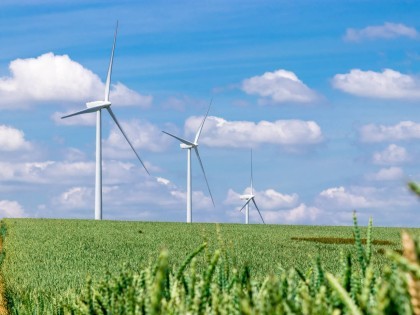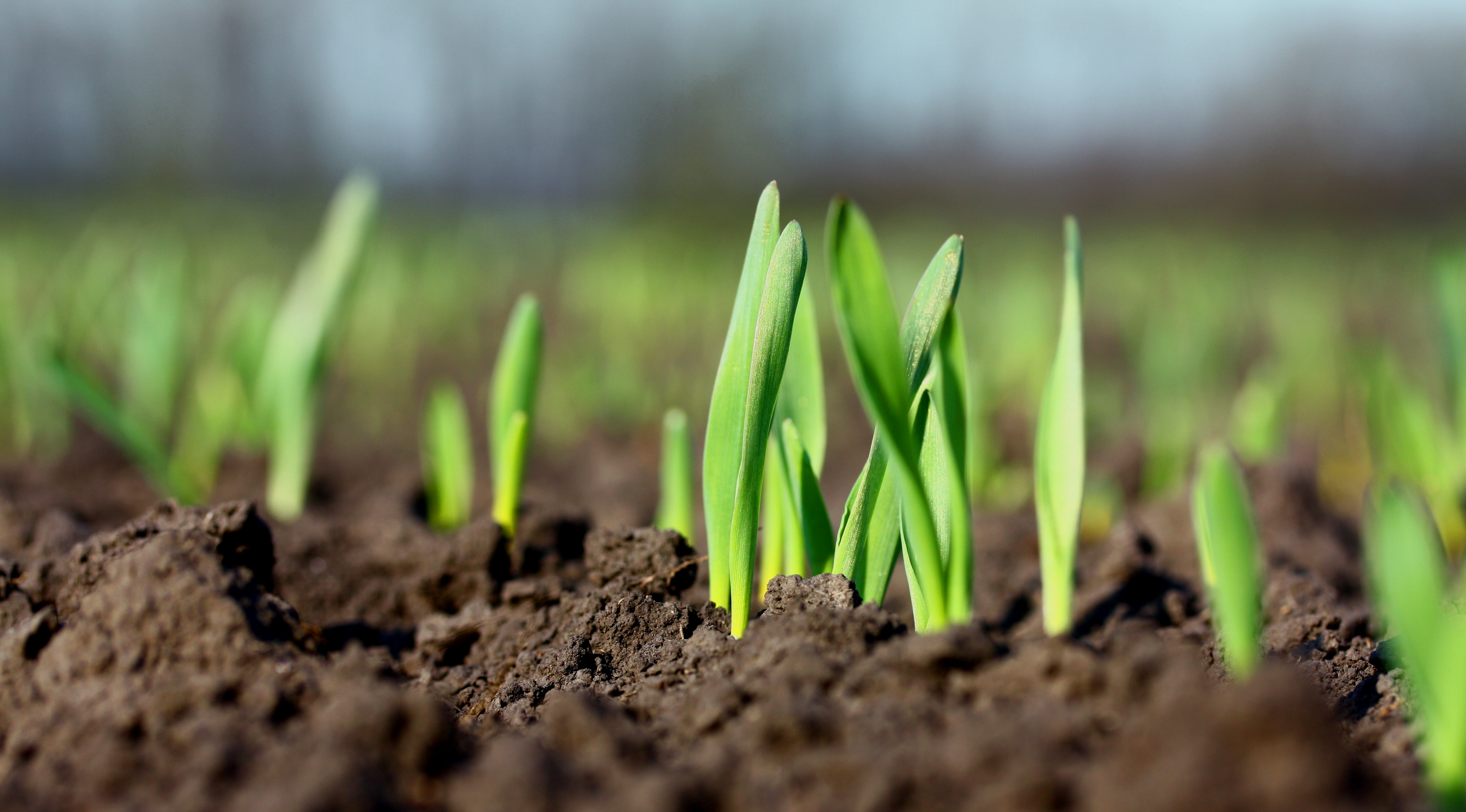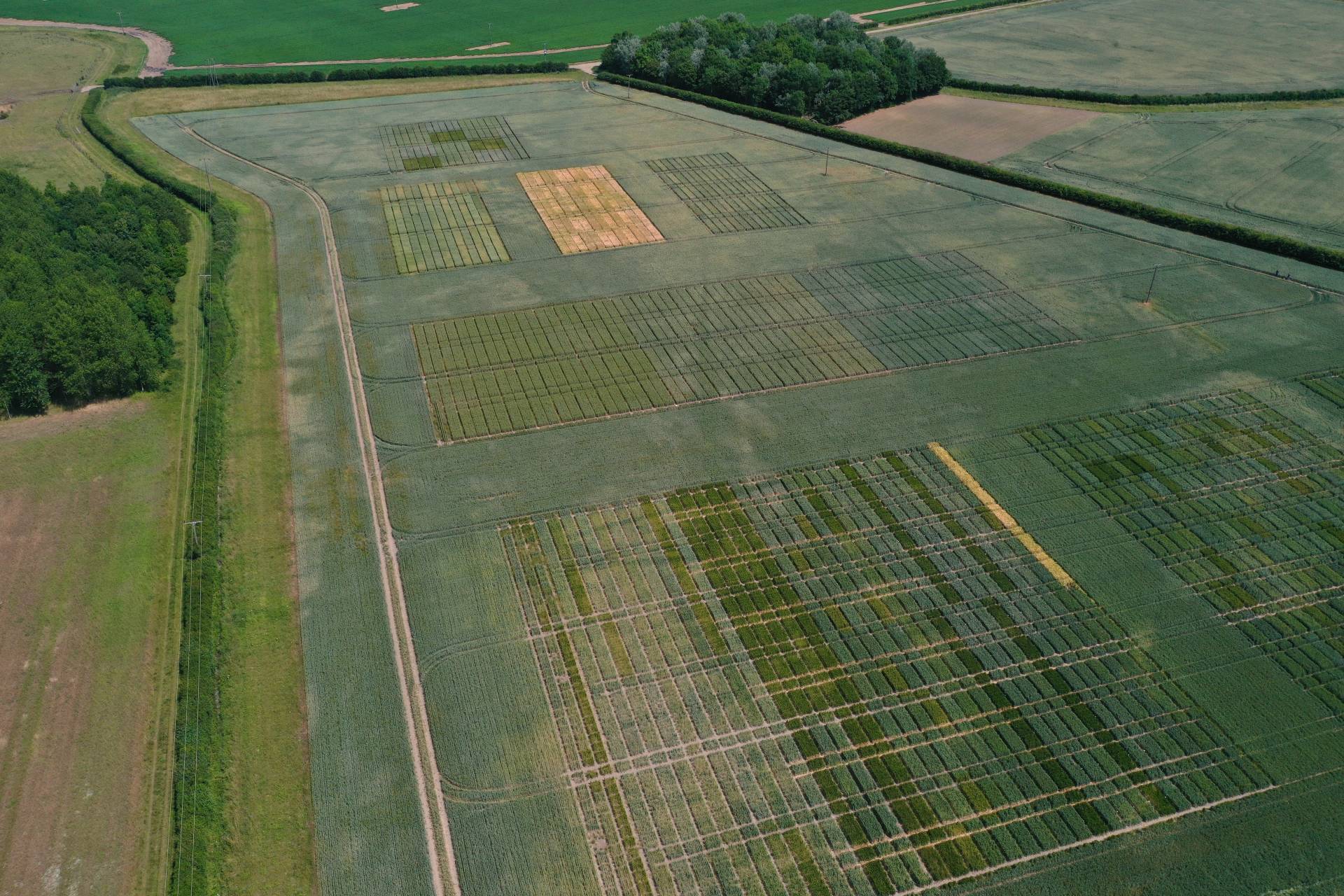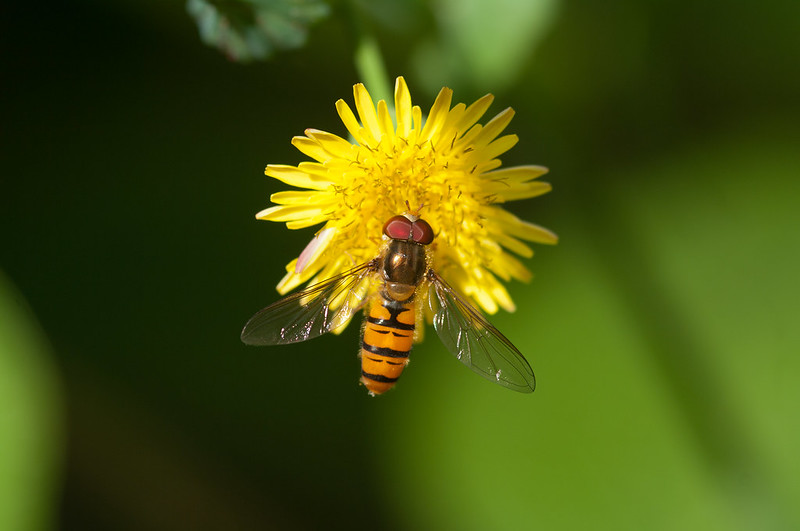
Our agricultural system provides affordable food for many and is underpinned by scientific progress in genetics, agronomy, and mechanisation with skills and techniques that we have incrementally built throughout the 20th century.
Over the past 200 years, our relationship with the planet and the many varied species our ecosystem supports has been dramatically altered. Land use has changed globally, with a five-fold increase in land use for agriculture. This means at least 40% of all land is now used for agricultural production to support our growing global population. Biodiversity loss since 1800 is estimated to be 14% of all species globally, a number which rises to nearer 50% in the UK, compared to pre-industrial levels.
Our ability to extract and add economic value to resources from the natural world has led to the rapid growth in the global economy and along with it our ecological footprint; 50% of all human-associated CO2 emissions have occurred since 1990, a date as far away in the past as 2050 is to us now. Depending upon where you are in the world and what is classified within the calculations as agriculturally-associated greenhouse gas emissions, somewhere between 10% and 37% of our emissions come from our food systems, though the lower bound is likely an underestimate as it is a narrower definition.
Our use of fossil fuels in agriculture has increased with alongside other industries. Agriculture relies on materials produced by energy intensive processes such as fertiliser production. Some estimates suggest that the global population growth from 1940 is approximately twice what it would have been without synthetic fertilisers (i.e. sitting nearer 8bn than the 4bn it would have been).
We must remember that this represents the difference between infant mortality and infant survival and that demographic changes that lead to smaller family sizes (and therefore a new equilibrium) take a number of generations to percolate. Alongside growth in fertilisers, the rapid growth in farmed animals to feed this growing population has led to increases in human-influenced sources of methane, regardless of the way in which its global warming potential is accounted for.
With populations projected to grow beyond 2050, as with almost all areas of society, in our farming systems we now face some hard choices. How do we ensure that our food system eliminates the use of fossil fuel and reduces greenhouse gas emissions from livestock? How do we make our farming systems resilient to the in-train effects of a warming world and simultaneously enable ecological restoration of some of the most important environmental services, protecting both humanity and the billions of other species that we share the planet with?
And how do we do this fast enough to limit warming to the agreed 1.5C, which currently we are predicted to reach by 2034? At NIAB, over the past two years our scientific research strategy has fundamentally shifted to put these challenges at the heart of everything that we do.
Collectively, we need to think both about what solutions we need for the next thirty years to take us to an overall position of net zero globally, and then looking beyond that to design a world where we have net negative emissions, while simultaneously reversing the damage that we have already done to our wider planetary ecosystem. This requires both immediate solutions with the technological assets already at our disposal, delivered hand in hand with new policies and longer-term vision, discovery and translation programmes that place delivery of scaled new technologies. The speed and scale of the action needed is faster and bigger than most of us realise and to meet the challenge, we must change.
As the custodians of so much of the land, agriculture must play its part. To paraphrase Sir Patrick Valance when discussing the advice to ministers about COVID-19 mitigation efforts, we have to go ‘sooner than we want to, harder than we want to and broader [geographically] than we want to’.
Ensuring that much of agriculture remains highly productive, and that maximum efficiency is gained per unit of food produced ensures that more land can be taken out of production and used to provide environmental services. The land sparing model is at the heart of the National Food Strategy.
It recommends a ‘three compartment model’ of land use: High-yielding farmland where most of the food we eat is produced, low-yielding farmland where the yield potential is lower and/or the environmental gain opportunities are better under lower yielding more extensive systems and then semi-natural land, managed for both biodiversity gain and carbon sequestration. As a system this would be designed to lead to overall net gain in Natural Capital, with the important caveat that high-yielding outputs of farming should not be pursued at all costs. The system is designed to end dependence upon fossil fuel and reverse environmental decline.
Reducing emissions from our food system
Our immediate actions should focus on steps to reduce fossil fuel consumption and the reduction of greenhouse gasses released from soils, as these will both reduce emissions and wider environmental pollution. Precision applications of fertiliser, reducing tillage or moving completely to no-till systems dramatically reduces greenhouse gas emissions from soil and wider runoff from agricultural soils into natural environments. The science behind these actions is well established and much of the job rests in the hands of advisors and technologists. NIAB’s farming systems team led by Dr Elizabeth Stockdale is at the forefront of delivering these solutions to farmers.
Whatever innovation occurs in agriculture, it is clear that demand-side changes are required, as agriculture produces what the market demands. Shortening the food chain and ensuring that more of the crops we grow are directly consumed by humans, rather than animals, leads to clear efficiencies. Around 65% of the wheat we grow in the UK is destined for animal feed and in the UK around 85% of the land but only 32% of the calories is associated with the production of animals, representing a clear opportunity to improve the overall efficiency of agriculture.
While meat will always be an important part of the diet and there is much that can be done to decrease greenhouse gas per unit of production, reducing the overall amount of meat we consume, and increasing the efficiency of conversion of plants into palatable protein products with consumer pull, could really shift land use patterns in the short term and decrease total emissions from farming.

Concerns around protein are not new and were at the heart of J. Arthur Rank’s pioneering programme in searching for non-animal protein sources in the 1960’s. The discovery and subsequent commercialisation of mycoprotein is worthy of its own article, but a key message is that although still dependent upon fossil fuel, for production at present, it has a far lower environmental footprint than all farmed animals.
At NIAB, my own research group has been working for some time with Marlow Foods to understand more about the biology of the fungus used to make Quorn, currently produced using glucose sources derived from wheat. Improving our understanding of how fungi respond to different sources of carbohydrate will allow us to utilise a more diverse range of crops and opportunities from the circular bioeconomy to supply the fungus with its nutritional needs.
Looking ahead to the crops we grow, there are significant opportunities to enhance current arable rotations, to improve upon the diversity of crops but also the way in which we farm with, rather than against, nature, but without reducing productivity. When thinking about the joint challenge of reducing the amount of fertiliser used and increasing the amount of protein from plants faba, soy, chickpea and other legumes could all have increased prominence in climate-friendly farming solutions.
At NIAB we are growing our capabilities in the area of legume genetics and biotechnology, in particular gene editing and genomic-assisted breeding building upon a strong base of research, development and germplasm resources stretching back many years. We are looking at how we can increase both the amount and diversity of legumes in the rotation, while maintaining productivity per unit of input.
Many of the legumes produced globally are not yet desirable either from a productivity or a sustainability perspective in Northern European production. However, we have the plant science skills to rapidly adapt them to our climate and our farming systems and a very encouraging regulatory landscape to enable the use of modern breeding tools to do so and to ensure that we are simply not ‘onshoring’ a wider sustainability problem.
Our team of legume scientists is rapidly growing and in addition to the work that Tom Wood and team has been carrying out in the area of legume pathology, the recent appointment of Dr Abhimanyu Sarkar, working with Dr Phil Howell has expanded our capabilities. Similarly, in Dr Emma Wallington’s biotechnology team, we have recently brought in Dr Subramanian Kondeti who has experience with soy transformation.
Thinking still further ahead about reducing fertiliser usage, through NIAB’s work at the Crop Science Centre, as part of a programme led by Professor Giles Oldroyd and funded by the Bill & Melinda Gates Foundation, we are working to understand how some plants can associate with bacteria that take nitrogen from the air and convert it into bioavailable nitrogen. As part of the symbiosis process this nitrogen is then transferred to the plant in exchange for carbohydrates. The ENSA programme (Engineering Nitrogen Symbiosis for sub-Saharan Africa) is working to transfer this capability into other crops such as cereals.
Unleashing this ability has long been the dream of many in this field of research, recapitulating the innovations that evolution has brought about. This represents the next frontier of scientific discovery; while it is relatively straightforward to move ‘simple’ single gene traits between closely related species, the ability to take whole modules of traits that have evolved over millions of years and move them between crops, represents one of the great scientific challenges of our generation.
We need to recognise that as a species, our survival rests upon the ability to harvest the free energy from the sun and that in Europe we are at a comparative disadvantage to equatorial regions of the world (by up to a factor of 10). In 2017, as part of a Nuffield scholarship, I was lucky enough to visit the artificial photosynthesis institute in the hills of Berkley California where I saw some of the innovations that may be viable options for producing both short- and long-term hydrocarbons from inorganic photosynthesis, unlocking an enormous range of potential products, both for food and for fuel.
It is therefore possible to imagine that we may see a period of relative onshoring of a higher proportion food production (for economic reasons around emissions rather than food security reasons) followed by a renewed period of re-globalisation, underpinned by renewable technologies, extracted above the ground, rather than below it.
Improving crop resilience
As our weather becomes more extreme as a result of a warming world, we need to build in crucial resilience traits to our crops. Perhaps familiar to many is NIAB’s work in charting and then harnessing the diversity from crop wild relatives. We have been able to introduce novel variation into wheat, by bringing together new genetic diversity, reconstituting wheat from its ancestral progenitors. This is now providing plant breeders with the with the raw material that they need to reduce losses and boost yield per unit of input and enhance pest and disease resistance. We are only just beginning to explore this new genetic diversity, brought in from wild relatives.
This work is led by the Designing future wheat team, which is championed by Dr Sigrid Heuer. Advances in our understanding in the genetic control of complex traits means that in addition to the diversity that exists at this current window in time, new genetic diversity can be introduced with a precision that was only dreamt of a decade ago and knowledge can be translated more effectively between crops and the model plants that have been the focus of intensive research study for the past forty years.

At the heart of this more ‘rational design’ of crops the use of machine learning technologies is critical, as the ‘old’ model of generating and testing hypotheses without the assistance of a computer model is becoming ever more strained by our own abilities to handle the vast supply of information that the global engine of scientific research is generating.
Here, regardless of the source of genetic variation, we need to ensure that our regulatory systems keep pace with crop science innovations. Our national listing and recommended listing systems, neither of which are administered by NIAB anymore (though we remain a key delivery partner to both) have the opportunity for reform and could capture and rank varieties with efficiency, resilience and resistance traits, in addition to the core productivity traits that have been prioritised for the last fifty years. Were these systems to change though, it must be done in such a way that still makes the UK a desirable marketplace for entry by breeders into any listing system, statutory or recommended.
Here the vast power of precision measurement and remote sensing could be harnessed in tandem with genomic technologies to measure across multisite trials and onto the farm how closely predicted genetic performance matches to actual real-world performance. NIAB has invested heavily in recruiting some of the key skills in mathematics, computer science and data science needed to underpin this transition.
Enhancing biodiversity
Public money for public goods, in this case the ecosystem services stemming from natural capital, is one of the key concepts of the Environment Bill in the UK, though similar innovations may be on the way in European CAP reform. True delivery of natural capital growth and increases in biodiversity must be achieved through reducing the land footprint of agriculture, which is most easily achieved by reducing the amount of livestock-associated land. However, this does not mean that we should ignore the wider health of our farmed crops and the microbes and insects that serve it.
It has been known for many years that where cropping systems are diversified, there is the potential to lower inputs without decreasing productivity. Pinning down the reasons for these observations is less well understood and likely includes soil nutritional balance, differing microbial dynamics both above and belowground and potentially greater support of beneficial insects and represents an exciting frontier of research, which will need to be carried out in partnership with the farming community. The primary concern here is to ensure that these diversified systems are as efficient as possible in terms of both the land area that they occupy and the yield per unit of input. However, it is also clear that correctly increasing the ecosystem services to and within the crop will likely lead to these productivity improvements.
Marmalade hoverfly, Episyrphus balteatus. Photo by Will George.
Despite the potential upside to large scale diversification of the rotation this is difficult given the market demand for what are currently more niche products and the way that supply chains are currently organised around a few staple commodity crops. This requires innovation beyond that of agriculture itself and should be a focus for policymakers trying to incentivise and de-risk the growth of new markets. Technology alone will probably not suffice.
In addition to the key challenge of producing healthy soil communities, innovations farming practice for the crops we currently grow must continue to be deployed. Insect pollination is worth €15billion in the EU, but the number of wild pollinators is decreasing due to loss of flower-rich habitats. Dr Michelle Fountain’s team at NIAB EMR participated in The Beespoke project. This has designed bespoke seed mixes and habitat management guidelines to support the suite of pollinators required for 14 crop types on 72 demonstration sites around the EU.
This project has showcased best management practices, and there are now training materials for biodiversity monitoring and for measuring pollination. This places solutions that boost biodiversity in farmed areas into the hands of growers and farmers, ensuring that the reversal of biodiversity decline happens across all land use types, but not at the expense of productive farming.
These are just a few current examples of the role NIAB continues to play a key role in the research and innovation landscape, helping to rapidly scale the outputs of scientific research and provide effective knowledge exchange and training. An extremely large part of NIAB the work that it carries out in partnership with the farming and horticultural sectors and the extensive links built up over a century of service. Now, at this critical juncture, we must all play our part in the mission to tackle the toughest problems of the 21st Century and put plant science into practice.
Dr Richard Harrison was appointed as the NIAB's Director of Cambridge Crop Research in May 2019. He is a Nuffield Scholar, a member of the BBSRC Agri-food Strategic Advisory Panel, the KTN Plant Science advisory board, and the Bioscience for Sustainable Agriculture and Food Strategy Advisory Panel and the NFU ‘Net Zero’ Science Advisory Board.
Dr Harrison has also recently helped deliver a ground-breaking partnership between leading businesses, charities and research providers to offer training for the agri-food sector. The CTP-Sustainable Agricultural Innovation will offer funded PhD places in genetics, agronomy, pathology and entomology and data science as well as comprehensive training in systems thinking, machine learning and business operations.

